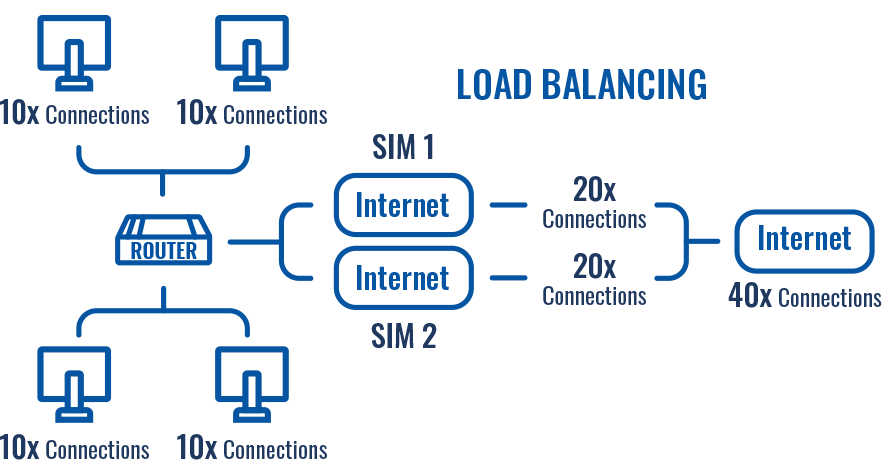LTE Bonding vs Load Balancing: Difference between revisions
(Created page with "==Summary== This articles discusses the differences between bonding and load balancing processes in LTE connections. If you wish to learn how to configure load balancing on...") |
No edit summary |
||
| Line 20: | Line 20: | ||
<b>Load balancing</b> is way of distributing traffic over multiple connections. It does not does not bond the connections together, instead | <b>Load balancing</b> is way of distributing traffic over multiple connections. It does not does not bond the connections together, instead | ||
<!-- | |||
Unlike BONDING, these connections remain separate and you do not need a hub in a Data Centre to bond these connections together. | Unlike BONDING, these connections remain separate and you do not need a hub in a Data Centre to bond these connections together. | ||
--> | |||
[[File:Networking_device_faq_lte_bonding_vs_load_balancing_load_balancing_scheme.png]] | [[File:Networking_device_faq_lte_bonding_vs_load_balancing_load_balancing_scheme.png]] | ||
Revision as of 14:49, 13 July 2020
Main Page > FAQ > Other Topics > LTE Bonding vs Load BalancingSummary
This articles discusses the differences between bonding and load balancing processes in LTE connections.
If you wish to learn how to configure load balancing on Teltonika-Networks devices, please watch this video.
Bonding
Bonding is the process of aggregating multiple individual connections into a single connection. In other words, bonding can combine the resources of multiple Internet service providers (ISPs) in order to the increase the speed of a single connection.
It works by establishing multiple connections over different ISPs to a VPN server. Data is sent and received over all connections and added up at the server. Thus, bonding can provide much faster data rates for a single connection because it aggregates resources of multiple ISPs.
For example, let's assume that a device behind a router with two SIM cards wants to establish a connection with a host on the Internet. First, two separate connections to a VPN server are established over each SIM card interface. Then data from the end device to the host can be transferred via the server using both connections at the same time.
This makes bonding useful in cases where high speeds are required for a single connection, such as video streaming and large file downloads.
Load balancing
Load balancing is way of distributing traffic over multiple connections. It does not does not bond the connections together, instead


